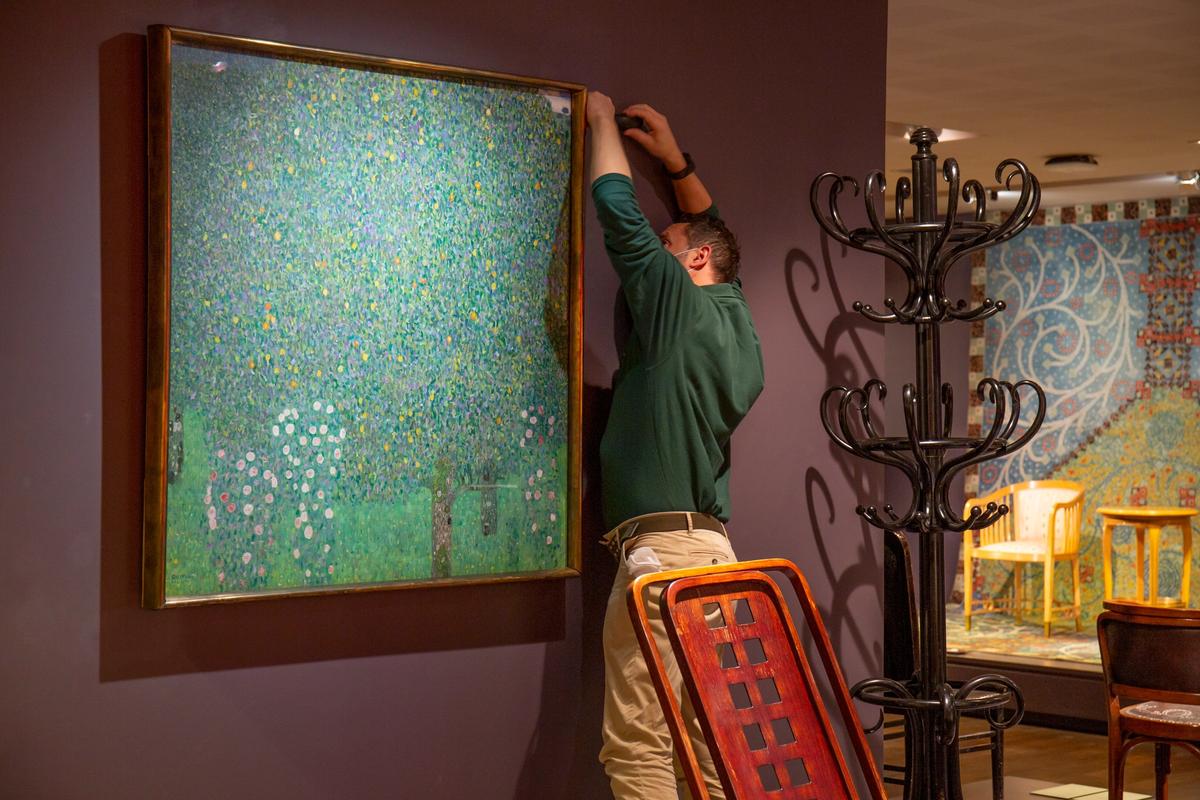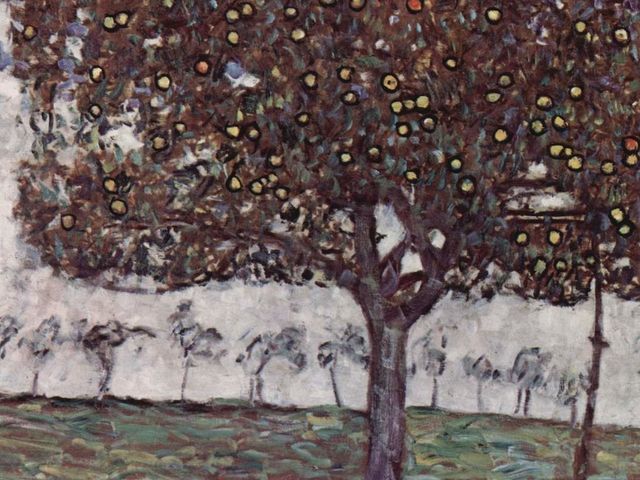Fifteen works by artists such as Marc Chagall and Gustav Klimt looted by the Nazis will be returned to the heirs of Jewish families after the French National Assembly approved the extensive restitution earlier this week.
Klimt’s Roses Under the Trees (around 1905), housed at the Musée d’Orsay in Paris, will be removed from the museum collection after the French government announced the launch of the restitution procedure last March. The painting was acquired by the Jewish Austrian industrialist and collector Viktor Zuckerkandl in 1911.
After Zuckerkandl and his wife Paula died, it was bequeathed to his niece, Eleonore “Nora” Stiasny. She was forced to sell it for a bargain sum in August 1938 to Philipp Häusler, a professor acquaintance who was a Nazi party member. Four years later, Stiasny and her family were deported and killed by the Nazis. The French state acquired the painting for the future Musée d’Orsay in 1980 from Galerie Peter Nathan in Zurich. Works housed in the Louvre and the Compiègne Castle Museum in northern France are also due to be returned.
A painting by Chagall, entitled Le Père, in the collection of the Centre Pompidou, was acknowledged as the property of David Cender, a Polish-Jewish musician who arrived in France in 1958.
In a statement, the French culture minister, Roselyne Bachelot, said that keeping the 15 works was “a denial of the humanity [of these Jewish families], of their memory, of their recollections”. The French Senate is expected to endorse the bill on 15 February.
The restitution move is part of the French culture ministry’s broader mission since 2019 to identify works seized from the Jews by the Nazis that have since entered its institutions. Thirteen of the works were, for instance, identified by the Commission for the Compensation of Victims of Spoliation, a state body created in 1999. Last year at the Musée d’Orsay, Bachelot said: “We have made good progress, but we still have a lot to learn about the itinerary of the stolen goods, about the origin of the works of our museums or about that of the goods circulating today in the art market.”
Last year, the Ministry of Culture announced that four works on paper in the Louvre by artists including Paul Delaroche and Auguste Hesse would be returned to their owners. Research revealed that these works were purchased in 1920 by the Egyptian-Jewish collector Moïse Levi de Benzion who died in La Roche-Canillac (Corrèze) in 1943.
“Like hundreds of other works, they were stolen from him in November 1940 at his Château de la Folie in Draveil (Seine-et-Oise, present-day Essonne) by the Nazi organisation responsible for the looting of works of art,” the ministry said. These works are not part of the 15 pieces due to be restituted.
UPDATE (28 January): The 15 works due to be returned include 12 pieces from the Armand Dorville collection which are housed at the Louvre, Musée d'Orsay and the Compiègne Castle Museum in northern France. But these works are at the centre of an ongoing legal battle after the Dorville family demanded the restitution of 21 works in total last year. The legal case centres on whether a sale of works held in Nice in 1942 was a forced sale. France's advisory body, however, claims that the sale was not forced and therefore the works cannot be restituted. But in exchange for the reimbursement of the purchase price, the state offered to return 12 of the works that were purchased by the Louvre during the sale in Nice (these are covered by the bill passed by the French Assembly). The Dorville family is contesting this decision.



